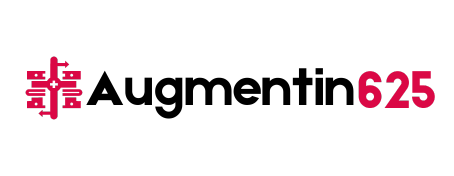
The NEBOSH Fee is often a key consideration for professionals looking to enroll in a safety certification. While many individuals focus on finding the most affordable option, it is crucial to understand that the cost of a NEBOSH Course is directly linked to the quality of training provided. A lower fee may sometimes indicate compromises in essential aspects such as instructor expertise, study materials, and practical training. Therefore, when evaluating the NEBOSH Fee, it is important to consider how it impacts the overall learning experience and future career prospects.
Understanding the relationship between NEBOSH Course fees and the quality of training can help learners make informed decisions. Investing in a well-structured course ensures not only certification but also the competence required to excel in occupational health and safety roles. Let’s explore how theNEBOSH Fee reflects the quality of training and what factors contribute to a valuable learning experience.
Factors That Influence NEBOSH Fee and Training Quality
1. Instructor Expertise and Experience
1.1 Qualified Trainers
The quality of a NEBOSH Course depends significantly on the expertise of the trainers. Highly qualified instructors with years of industry experience contribute to a comprehensive learning experience. Institutions that charge a higher NEBOSH Fee often invest in seasoned professionals who can provide in-depth knowledge and practical insights.
1.2 Interactive Teaching Methods
Experienced trainers use engaging teaching methodologies, such as real-world case studies and interactive sessions. This enhances understanding and helps learners retain complex concepts better, justifying a higher NEBOSH Course fees structure.
2. Course Material and Study Resources
2.1 Comprehensive Study Guides
Well-structured training centers provide high-quality study materials, including textbooks, practice exams, and digital resources. The NEBOSH Fee usually covers these essentials, ensuring learners receive all necessary tools for exam success.
2.2 Online and Offline Learning Support
Courses that charge higher NEBOSH Course fees often include supplementary materials such as video tutorials, recorded lectures, and interactive e-learning platforms. These resources cater to different learning styles and improve the overall training experience.
3. Practical Training and Real-World Application
3.1 Hands-On Workshops
Higher NEBOSH Fee often indicates better practical training opportunities, including hands-on workshops and real-world safety scenario simulations. This practical exposure is essential for building confidence and applying theoretical knowledge effectively.
3.2 Site Visits and Industrial Exposure
Some premium NEBOSH Course fees include site visits to industries where learners can witness safety measures in action. This exposure provides practical insights that enhance learning beyond theoretical concepts.
4. Accreditation and Recognition
4.1 NEBOSH-Accredited Centers
Enrolling in a NEBOSH-accredited training center ensures that the course meets international safety standards. Institutions with lower NEBOSH Fee might not have accreditation, which can affect the credibility of the certification.
4.2 Global Recognition
Higher NEBOSH Course fees often reflect globally recognized training programs that improve employability prospects. Employers prefer candidates trained at well-reputed institutions that follow international safety guidelines.
5. Exam Preparation and Support
5.1 Mock Exams and Feedback
Many training providers charging higher NEBOSH Course fees offer extensive exam preparation support, including mock exams, one-on-one feedback sessions, and revision materials. This structured approach significantly improves pass rates.
5.2 Personalized Coaching
Premium courses may also include mentoring and personalized coaching to address individual weaknesses. This additional guidance ensures learners are fully prepared to pass their NEBOSH examinations confidently.
6. Post-Certification Benefits
6.1 Career Guidance and Job Placement Support
Some institutions include career support services as part of their NEBOSH Fee, helping graduates secure jobs or advance in their careers. This additional service is highly valuable for professionals seeking opportunities in the safety sector.
6.2 Continuous Learning Opportunities
HigherNEBOSH Course fees may also grant access to refresher courses, webinars, and networking events, ensuring learners stay updated with the latest industry trends.
Choosing the Right NEBOSH Course: A Step-by-Step Guide
Step 1: Assess Training Providers
Research different training providers, compare their NEBOSH Fee, and verify their accreditation status to ensure credibility.
Step 2: Review Course Curriculum
Check if the syllabus covers all necessary topics comprehensively and includes practical training components.
Step 3: Evaluate Study Resources
Ensure that the institution provides high-quality learning materials, including textbooks, practice tests, and online resources.
Step 4: Consider Trainer Expertise
Look for institutions with experienced trainers who offer engaging and interactive learning experiences.
Step 5: Check Exam Support Services
Opt for courses that provide strong exam preparation support, such as mock exams and personalized feedback.
Step 6: Look for Additional Benefits
Consider post-certification benefits such as job placement support and continuous learning opportunities.
Conclusion
The NEBOSH Fee is a crucial indicator of the training quality, influencing factors such as instructor expertise, study resources, practical training, and accreditation. While affordability is important, choosing a course based solely on cost may compromise the learning experience and career prospects. By investing in a well-structured and accredited NEBOSH Course, professionals can ensure they receive top-tier training that enhances their skills and employability. Evaluating NEBOSH Course fees carefully will help learners select a program that offers the best value and long-term career benefits.

0 Comments
Post Comment